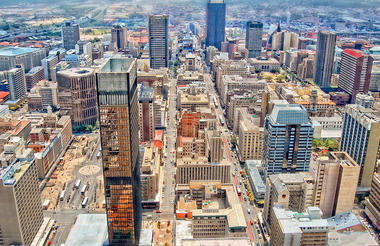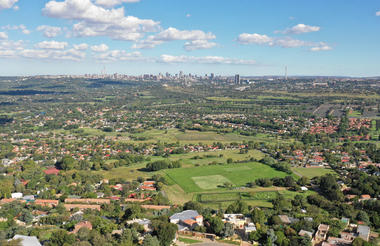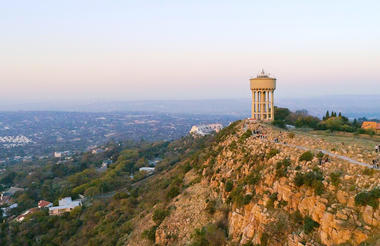The Western Cape, arguably the most scenic and varied of South Africa's nine provinces, serves as a major drawcard for visitors to South Africa. Located in the southwest corner of the country, the province is blessed with stunning coastlines, breathtaking mountains, indigenous forests, historic wine estates and scorched stretches of strikingly beautiful semi-desert. Visitors can enjoy everything from the magnificent city of Cape Town with its iconic Table Mountain and gorgeous surrounding Winelands, to the exhilarating outdoor activities and spectacular natural scenery of the Garden Route, as well as the fynbos-covered sand dunes, sun-bleached beaches and remote fishing villages of the lesser-explored West Coast region. The Western Cape has just about everything that the rest of the country can offer, all rolled into one easy explorable destination.

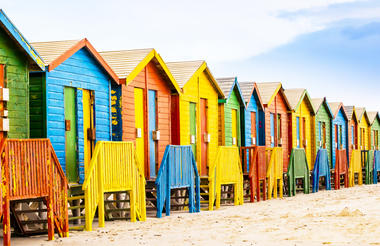
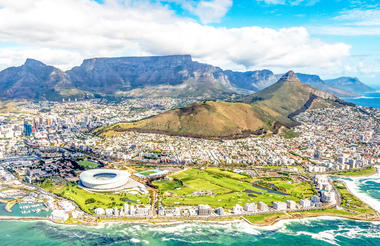
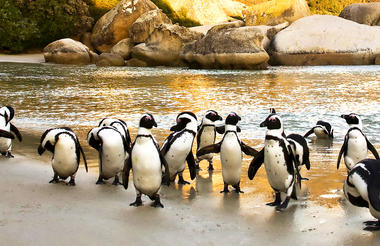
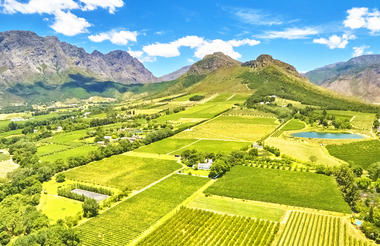

The South African province of Gauteng - 'the place of gold' - is home to one of Africa's most vibrant cities and sub-Saharan Africa's economic capital Johannesburg, South Africa's capital Pretoria, vibrant Soweto, the Magaliesberg Mountains, and the World Heritage-listed Cradle of Humankind. While it is the smallest of South Africa’s provinces, it serves as the economic powerhouse of the country. Gauteng is known for its multicultural mix of people, eclectic heritage, and bustling jacaranda-lined cities fringed by scenic natural landscapes. Visitors can enjoy ample nature trailing and hiking opportunities, discover South Africa’s most famous township and explore the origins of humankind.
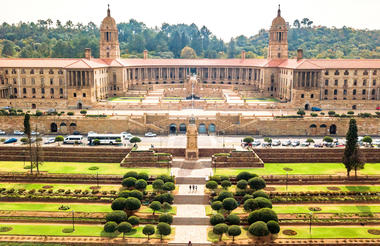
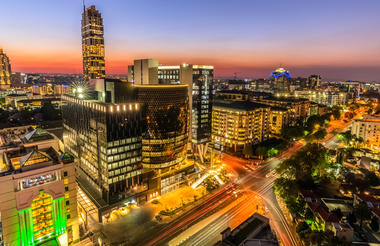
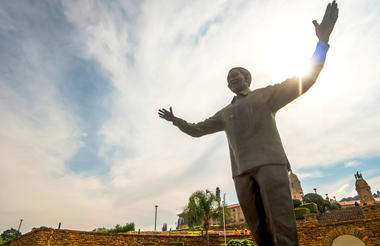



Don’t be surprised if you don’t hear South Africans say Johannesburg. Most of the time, they call this city Jo’Burg, Joey’s, or even Joy’Burg.
In 1884, on a flat, stretch of yellow, sparsely treed veld in South Africa was a farm called Ostrich Springs. Actually, it was called Vogelstruisfontein, but Ostrich Springs is the rough translation. When gold was found in the area everything changed and two years later, the gold-mining town of Johannesburg sprung up. The Whitewater Ridge, or Witwatersrand as it known, is a largely underground geological formation holding the largest known gold reserves in the world. It is also one of Earth’s oldest geological structures. Ten years after the discovery, over 100 000 people of all nationalities called it home. Trees were planted to supply firewood, but more importantly, posts for the mine shaft. Over the years, Johannesburg became, and still is, the largest man-made forest in the world.
The Mponeng gold mine is the deepest operating mine in the world. Its current depth is 3.84km, but there are plans afoot to deepen the shaft to 4.22km. Visiting the gold mines and travelling deep below the earth’s surface is, if you’re not claustrophobic, an excursion not to be missed.
Gold is also the reason why Johannesburg is the world’s largest city not founded on a shoreline, bank of a river, or beside a large inland lake. It is now one of the world’s megacities. Johannesburg is the provincial capital of the Gauteng Province, the wealthiest province in South Africa. Its financial power and global trading make Johannesburg an alpha or power city. It comes as no surprise then that Africa’s Richest Square Mile – Sandton, is here.
Sandton City, an energetic hub of Afro-cosmopolitan glamour is one of Africa’s leading and most prestigious shopping centres. Combining the world’s most desirable brands with everyday leisure and entertainment, it offers an unparalleled shopping experience. It’s Central Business District houses almost 10% of South African companies listed on the Johannesburg Stock Exchange. Right in the middle of Sandton City is Nelson Mandela Square, named after South Africa’s first democratically elected president.
This recent history still vibrates through the fabric of South Africa and nowhere is this more apparent than in Vilakazi Street, Soweto – the large township began life as housing for mine workers. This famous location became home to two Nobel Peace Prize winners, Bishop Desmond Tutu a.k.a. the Arch, and the late President Nelson Mandela. Nelson Mandela’s former home is now the Mandela House Museum. Nearby is the Hector Peterson Museum and Memorial.
To really understand South Africa’s recent history, visit the Apartheid Museum. The exhibits, created by a multi-disciplinary team of curators and creatives, pay testimony to the events and human stories of Apartheid.
And then there’s Constitution Hill. No other South African prison incarcerated the number of world-renowned men and women. People such as Nelson Mandela, Mahatma Gandhi, Joe Slovo, Albertina Sisulu, Winnie Madikizela-Mandela and Fatima Meer. It was fitting then that the Constitutional Court judges, appointed by President Nelson Mandela, chose the Old Fort prison complex as the site of the new Constitutional Court, emphasizing its historical and symbolic importance.
Before gold, the history of the area began millions of years in the past. And the archaeological digs at the Sterkfontein Caves. Only 90 minutes from the city, this UNESCO World Heritage site, which includes the Cradle of Mankind are another fascinating excursion. So far, the Cradle has revealed more fossils of early hominids than any other site on Earth. You can learn more about this human history thanks to the award-winning, world-class Maropeng Visitor Centre’s exhibits, displays and archaeological sites.
But it’s not all history and gold. Johannesburg has amazing shops, restaurants, theatre, clubs, and gardens. It’s a city pulsing with life and energy. And if you are there during the rainy season, you might even experience of one of the famous and unforgettable Highveld thunderstorms!
